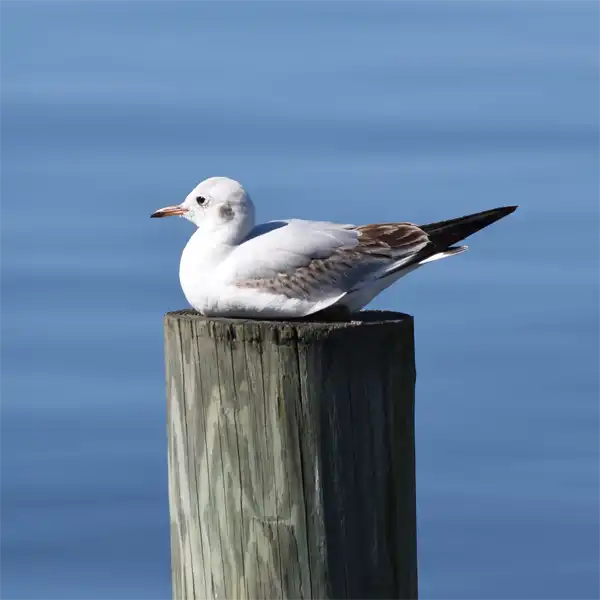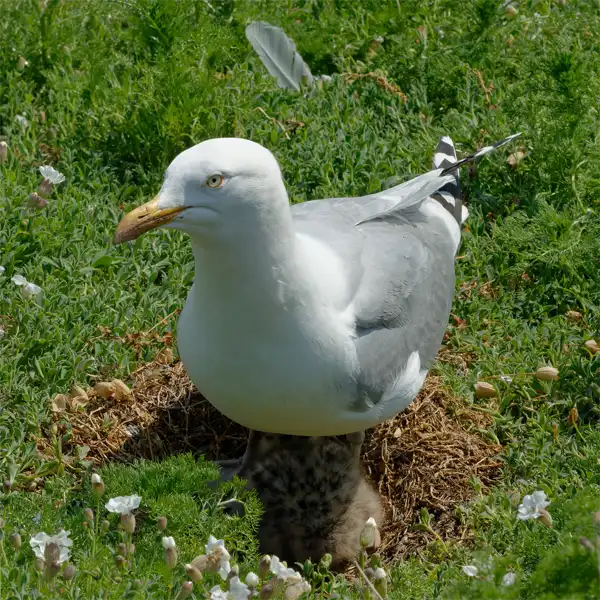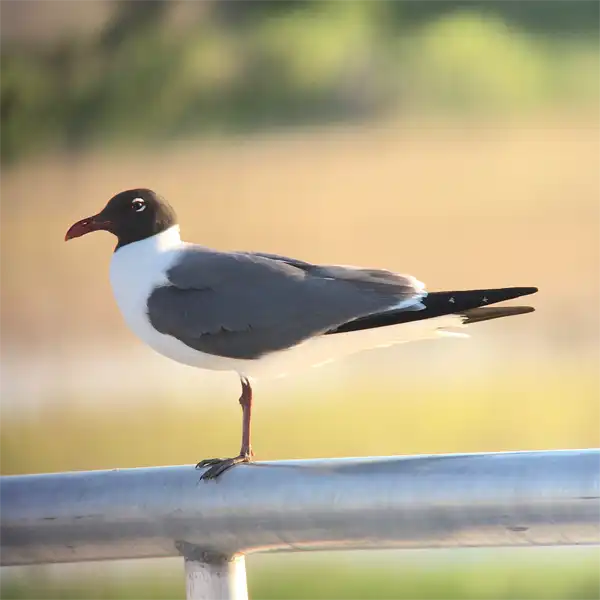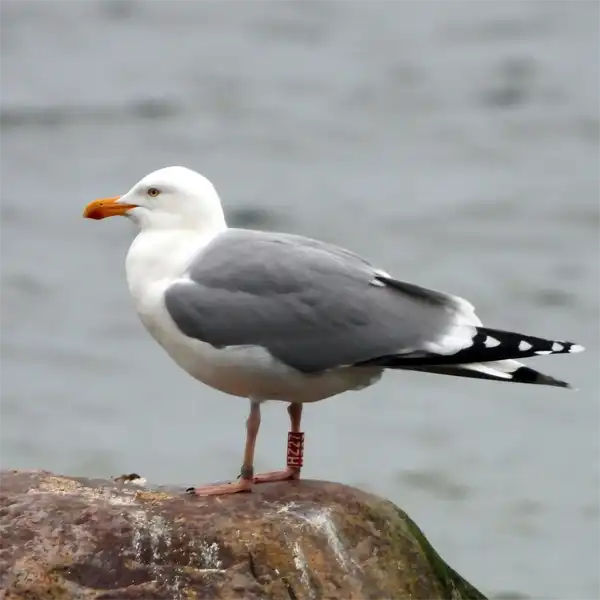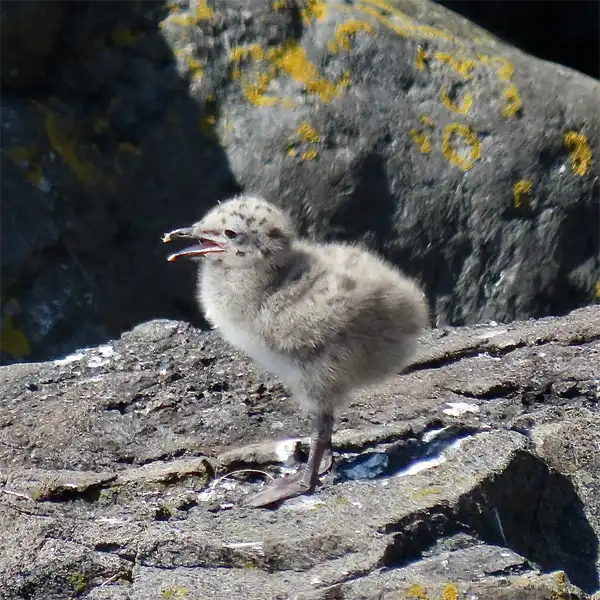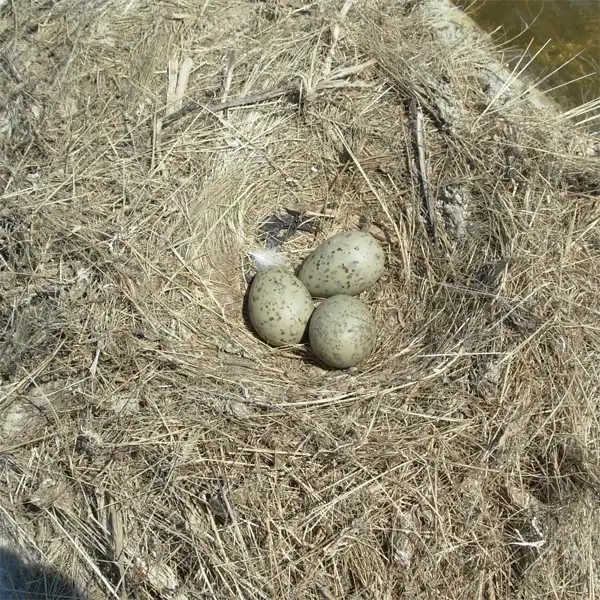Seagulls
- Scientific Name
- Subfamily Larinae
- Also Known As
- Gulls, Sea Gulls
- Range
- All of Florida
- Diet
- Fish, Invertabrates, Human Waste
- Life Expectancy
- 10 - 15 Years
Quick Links
Seagulls in Central Florida
The herring gull (Larus argentatus) and laughing gull (Leucophaeus atricilla) are two common gull species found along Florida’s central Atlantic and Gulf coasts. Often considered nuisance birds, gulls thrive in urbanized coastal areas rich in food waste.
This comprehensive guide provides identification tips, biology facts, and deterrent methods for mitigating gull overpopulation issues in central Florida. Read on to learn gull habits, reproduction, diet, health risks, signs of infestation, and professional management options for these adaptable, opportunistic birds.
Appearance and Identification
Gulls can be identified by their physical characteristics at juvenile and adult life stages
Gull tracks and droppings also aid in identification. Their feces tend to be more solid and compact compared to runny, white seabird guano. Gulls make loud, raucous calls.
Maturation Rate
Gull chicks grow and develop rapidly, leaving the nest within 1 month of hatching. They learn to fly and become independent juveniles by 6-8 weeks old, attaining adult size by 2-3 months. Sexual maturity and adult plumage develops by 2-4 years old depending on species.
Habits and Behavior
Gulls are diurnal, most active during the day and morning. Coastal species like herring and laughing gulls seldom travel more than 20 miles (32 km) inland from the beaches, marshes, and estuaries where they feed and nest.
During winter, northern gulls migrate down to occupy central Florida’s warm beaches. They congregate in large flocks along the coast and inland water sources like lakes and retention ponds.
Gulls bathe and preen daily, spending much time resting on docks and piers when not flying or swimming. They aggressively scavenge for scraps and waste from human activities.
Reproduction and Lifespan
Gulls reach breeding age by 2-4 years old. They form monogamous seasonal pair bonds for nesting, with females laying 1-3 speckled olive/brown eggs in clutch sizes. Incubation lasts 3-4 weeks, with chicks fledging by 4-6 weeks old.
Most gulls live 10-15 years in the wild. Some exceptional individuals survive 30+ years. Gulls can produce many offspring annually due to long breeding seasons, high fertility rates, and rapid chick development.
Ideal Habitat and Range
Central Florida’s mild climate and extensive coastline provides prime habitat for large gull populations year-round. Stable temperatures averaging 70°F (21°C) allow successful breeding. Abundant beaches, islands, bays, and inland lakes offer nesting sites.
Coastal cities like Tampa, Clearwater, Orlando, and Cape Canaveral provide plentiful food waste sources. Gulls adapt readily to human-populated areas. Developed landscapes near the ocean provide them with food and nesting resources.
As opportunistic scavengers, gulls thrive on readily available organic waste. Their high fertility, rapid growth, and lack of natural predators allows numbers to quickly escalate. Ongoing management is required to control overpopulated gulls drawn to central Florida’s urbanized coasts.
Diet and Feeding
Gulls are omnivorous opportunistic feeders. They consume a diverse diet including:
- Garbage scraps – leftover food, wrappers, crumbs
- Fishing industry discards – damaged catch, processing waste
- Marine invertebrates – crabs, mollusks, worms, shrimp
- Bird eggs, hatchlings, carrion
- Rodents, reptiles, amphibians
- Insects – grasshoppers, crickets, beetles
- Grains, berries, seeds
Gulls frequent landfills, fast food parking lots, fishing docks, beaches, and picnic areas to scavenge anything edible. They swallow food whole or tear pieces with their curved beak.
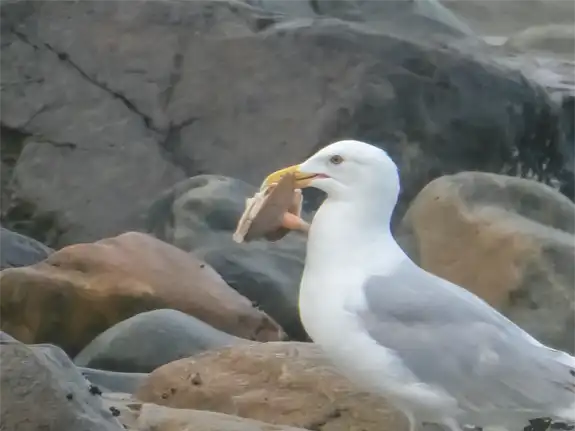
Photo 146845865 © bgaudubon, CC BY-NC

Common Health Risks
Large gull populations pose some health and safety concerns:
- Fecal contamination – Gull droppings accumulate in coastal recreation areas, increasing risk of bacterial infections and triggering respiratory issues in those with sensitivities. Salmonella, E. coli, and Listeria have been isolated from gull guano.
- Nuisance – Gulls exhibit aggressive food stealing behavior. Their loud calls are a noise nuisance. Droppings and feathers create unsanitary conditions.
- Structural/property damage – Gulls tear up roofing, window screens, and exterior structures when nesting. Their pecking and claws can damage lights, wiring, and exterior finishes.
- Aircraft strike hazard – Gulls crossing flight paths are hazardous to aircraft takeoff and landing at airports. Their size and flocking behavior elevates the bird strike risk.
- Predation – Gulls consume eggs and chicks of other coastal nesting birds, negatively impacting their reproductive success.
Preventing Gull Overpopulation
An integrated bird management approach combines multiple deterrents and population control methods:
- Discourage nesting using spike strips, slope modifications, netting
- Remove food attractants – Manage waste disposal, prohibit feeding
- Use predator decoys (falcons, owls) and distress calls
- Install physical barriers – Wire grid, overhead lines to block perching
- Population control – Egg oiling, capture and relocation, lethal control if required
Ongoing monitoring and adaptative management is needed to track numbers and mitigate gull issues. A coordinated response across municipalities, businesses, and property owners is most effective for sustainable population reduction.
Gulls in Central Florida – Conclusion
Abundant food waste and ideal nesting habitat allows gull populations to thrive along central Florida’s urbanized coastline. This creates nuisance, health, and property damage concerns requiring active management coordination between stakeholders. Through an integrated program focused on exclusion, deterrence, and population control, problematic gull overpopulation resulting from human-provided resources can be reduced to balance community goals.
Signs of excessive gulls, accumulations of droppings, and structural damages indicate the need for professional bird management services. Prompt preventative action and maintaining a long term population management plan is key to addressing overpopulated gulls in central Florida.

